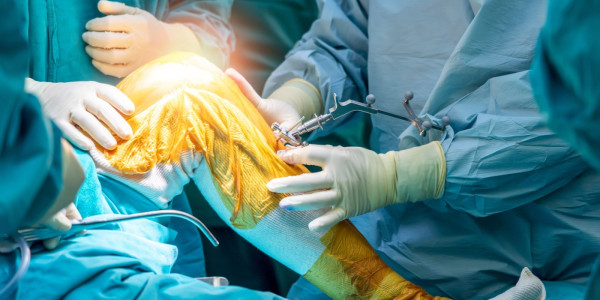
United States, 1st Aug 2024, King NewsWire - Orthopedic joint replacement surgery has revolutionized the treatment of severe joint disorders, providing relief and improved quality of life for millions of patients worldwide. This surgical procedure involves replacing a damaged or arthritic joint with an artificial prosthesis, typically made of metal, ceramic, or plastic. The most common joints replaced are the hip, knee, and shoulder. As our understanding of joint biomechanics and surgical techniques advances, so too does the success and longevity of these procedures.
Advances in Joint Replacement Surgery
The past few decades have seen significant advancements in joint replacement surgery. One of the most notable developments is the improvement in prosthetic materials and design. Early prostheses often suffered from wear and loosening, leading to the need for revision surgeries. Modern implants, however, are made from highly durable materials such as titanium alloys and cross-linked polyethylene, which offer increased longevity and better mimic the natural movement of joints.
Computer-assisted surgery (CAS) and robotic-assisted surgery are also transforming the field. These technologies enhance the precision of implant placement, which is critical for the success and durability of joint replacements. Robotic systems provide real-time feedback and allow for adjustments during surgery, reducing the risk of complications and improving outcomes. Furthermore, 3D printing technology enables the creation of custom implants tailored to the patient's anatomy, ensuring a better fit and function.
Techniques in Joint Replacement Surgery
Minimally invasive surgery (MIS) techniques are increasingly being adopted in joint replacement procedures. Traditional joint replacement surgery involves large incisions, significant muscle dissection, and prolonged recovery times. In contrast, MIS approaches use smaller incisions and specialized instruments to minimize tissue damage. This results in less postoperative pain, shorter hospital stays, and quicker recovery times. For example, minimally invasive hip replacement involves incisions of just 3-6 inches, compared to the 10-12 inches required for conventional surgery.
Another innovative technique is the direct anterior approach (DAA) for hip replacement. Unlike traditional approaches that require cutting through major muscles, the DAA allows surgeons to access the hip joint by working between the muscles. This muscle-sparing technique leads to a faster recovery, less postoperative pain, and a reduced risk of dislocation.
In knee replacement surgery, the development of patient-specific instrumentation (PSI) has improved surgical accuracy. PSI uses preoperative imaging to create custom guides for bone cuts, ensuring optimal alignment of the knee prosthesis. Proper alignment is crucial for the longevity of the implant and the overall success of the surgery.
Rehabilitation and Outcomes
Rehabilitation is a critical component of successful joint replacement surgery. Advances in physical therapy and pain management have significantly improved postoperative outcomes. Early mobilization protocols encourage patients to begin moving the joint within hours of surgery, promoting healing and reducing the risk of complications such as blood clots and stiffness.
The use of multimodal pain management strategies, including nerve blocks, oral medications, and non-opioid analgesics, has enhanced patient comfort and facilitated faster recovery. Enhanced recovery after surgery (ERAS) protocols, which focus on optimizing all aspects of patient care, have also contributed to better outcomes and shorter hospital stays.
Future Directions
The future of joint replacement surgery looks promising, with ongoing research focused on further improving implant materials, surgical techniques, and patient outcomes. Regenerative medicine, including the use of stem cells and tissue engineering, holds potential for developing biologic solutions to joint repair. These approaches aim to regenerate damaged cartilage and bone, potentially reducing the need for artificial implants.
Moreover, advancements in biomaterials are expected to lead to the development of "smart" implants that can monitor joint function and health in real-time. These implants could provide data on wear, alignment, and early signs of complications, allowing for timely interventions and extending the life of the prosthesis.
In conclusion, orthopedic joint replacement surgery has made remarkable strides in recent years, offering patients more durable and functional implants, less invasive surgical options, and quicker recoveries. With continued innovation and research, the future holds even greater promise for those suffering from debilitating joint conditions.
Follow us on Facebook and Twitter. By Dr. Kevin Crawford, Sports Medicine Lubbock and Orthopedic Surgeon Lubbock.
Media Contact
Organization: Dr. Kevin Crawford, Orthopedic Surgeon
Contact Person: Dr. Kevin Crawford
Website: https://lubbocksportsmed.com/lubbock-sports-doctors/dr-kevin-crawford/
Email: Send Email
Country:United States
Release id:15098
The post Orthopedic Joint Replacement Surgery: Advances, Techniques, and Future Directions appeared first on King Newswire. It is provided by a third-party content provider. King Newswire makes no warranties or representations in connection with it.






